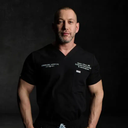Thank you for your question. You’ve posed an interesting question regarding whether PRP or the Vampire Facelift® can reduce swelling and redness after a rhinoplasty, since PRP does have wound-healing benefits.First a bit about myself — I’m a Board-certified cosmetic surgeon and Fellowship-trained oculofacial plastic and reconstructive surgeon, practicing in Manhattan and Long Island for over 20 years. I have a great deal of experience with platelet-rich plasma, as we use it frequently for treating acne scars, dark under eye circles, and hair loss. I’ve also been a information resource of the media for the Vampire Facelift®.In a typical rhinoplasty procedure, there is a part called an osteotomy where the nasal bones are broken in order to bring the side walls of the nose inwards, which is what causes most of the swelling and bruising. So, to answer your question, PRP can indeed improve skin quality and circulation, but I don’t think it can make much of an impact on the swelling and bruising resulting from a rhinoplasty.This, however, is also dependent on the type of rhinoplasty you’re having. Keep in mind that the degree, length, and volume of surgery all have an effect on swelling immediately after surgery. Now, that type of surgery is a combination of anesthetic fluid and reactive swelling, and since PRP in beneficial only in terms of improving collagen production and blood supply, I would not use it as a way to accelerate the wound healing in terms of swelling.In our practice, we usually use PRP in combination with extracellular matrix for incisions, such as facelift incisions and eyelid procedures. Ultimately, I would advise that when choosing surgery for rhinoplasty, you have to get realistic understanding of the effects of the rhinoplasty when it comes to the healing process. If needed, you can always incorporate PRP or the Vampire Facelift® as part of an overall facial rejuvenation plan later on. I hope that was helpful and I wish you the best of luck!
